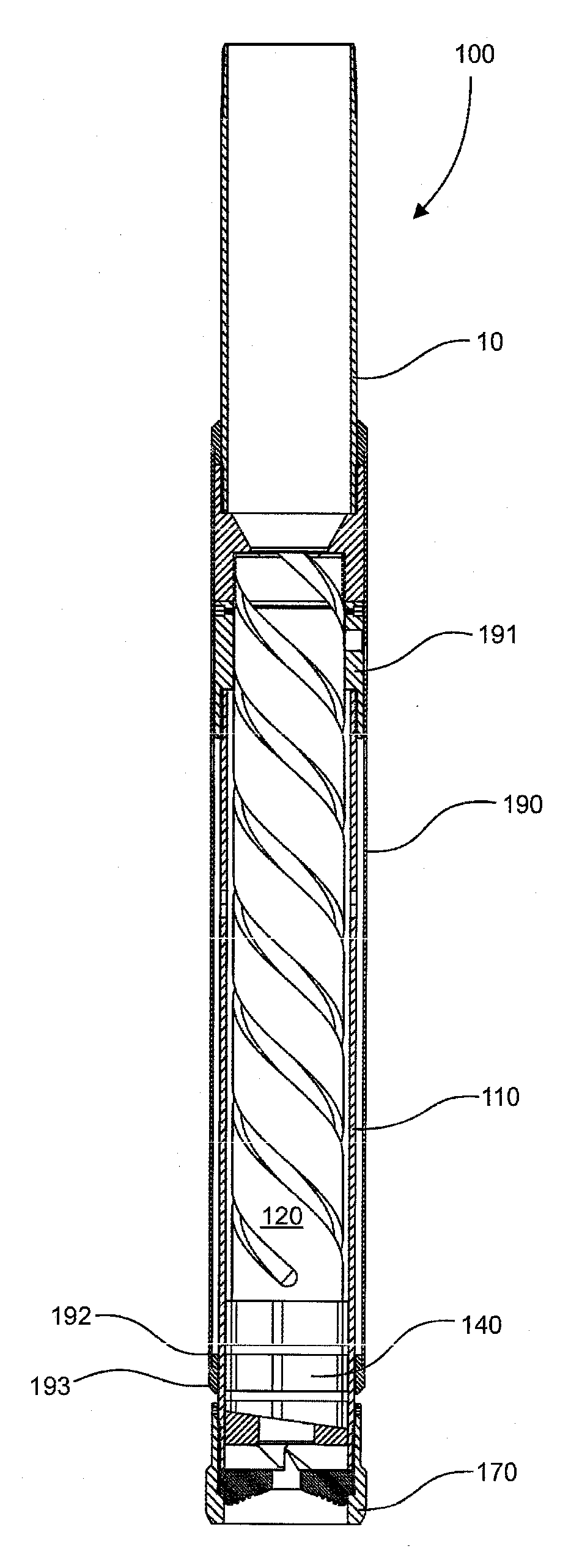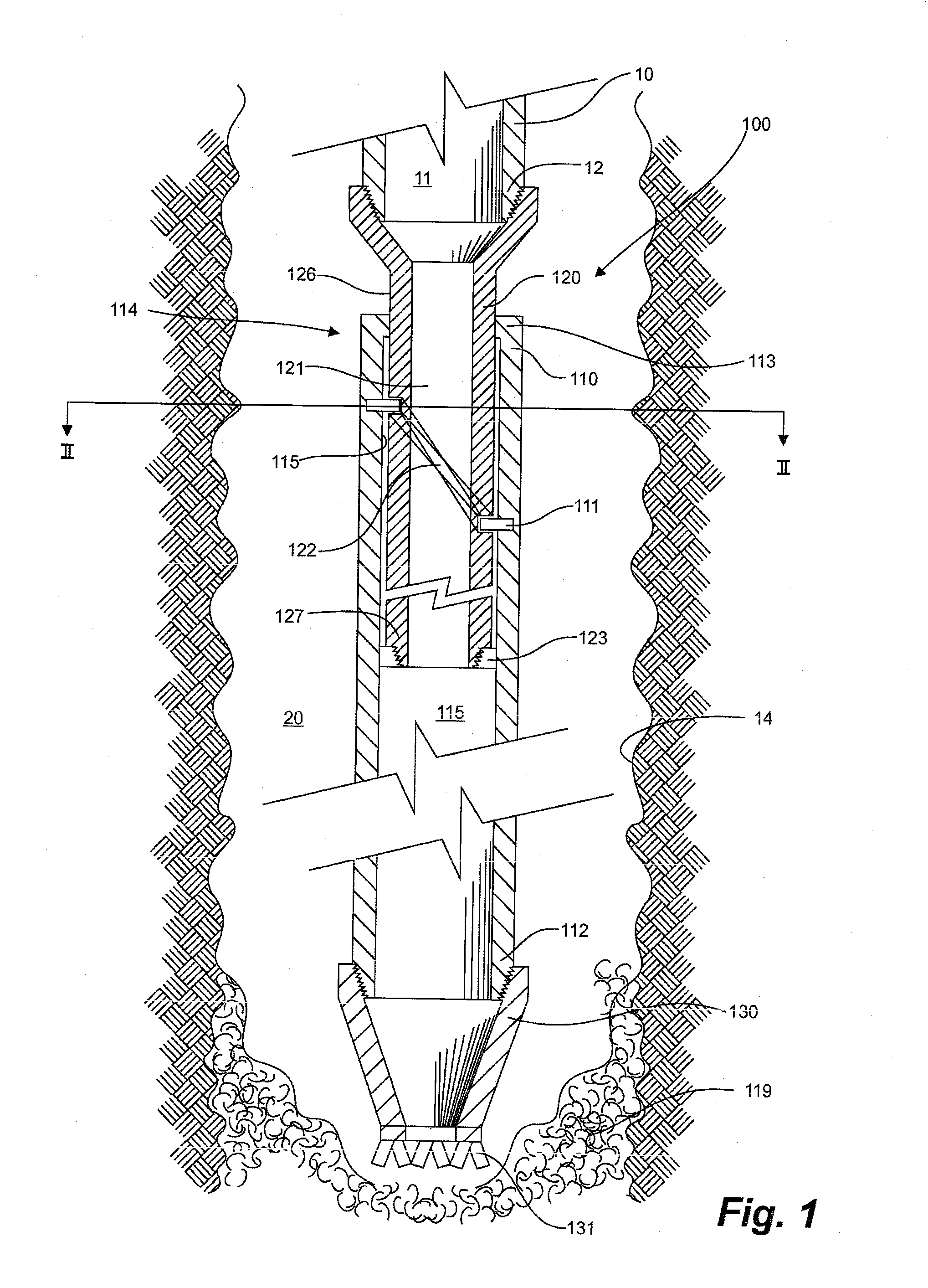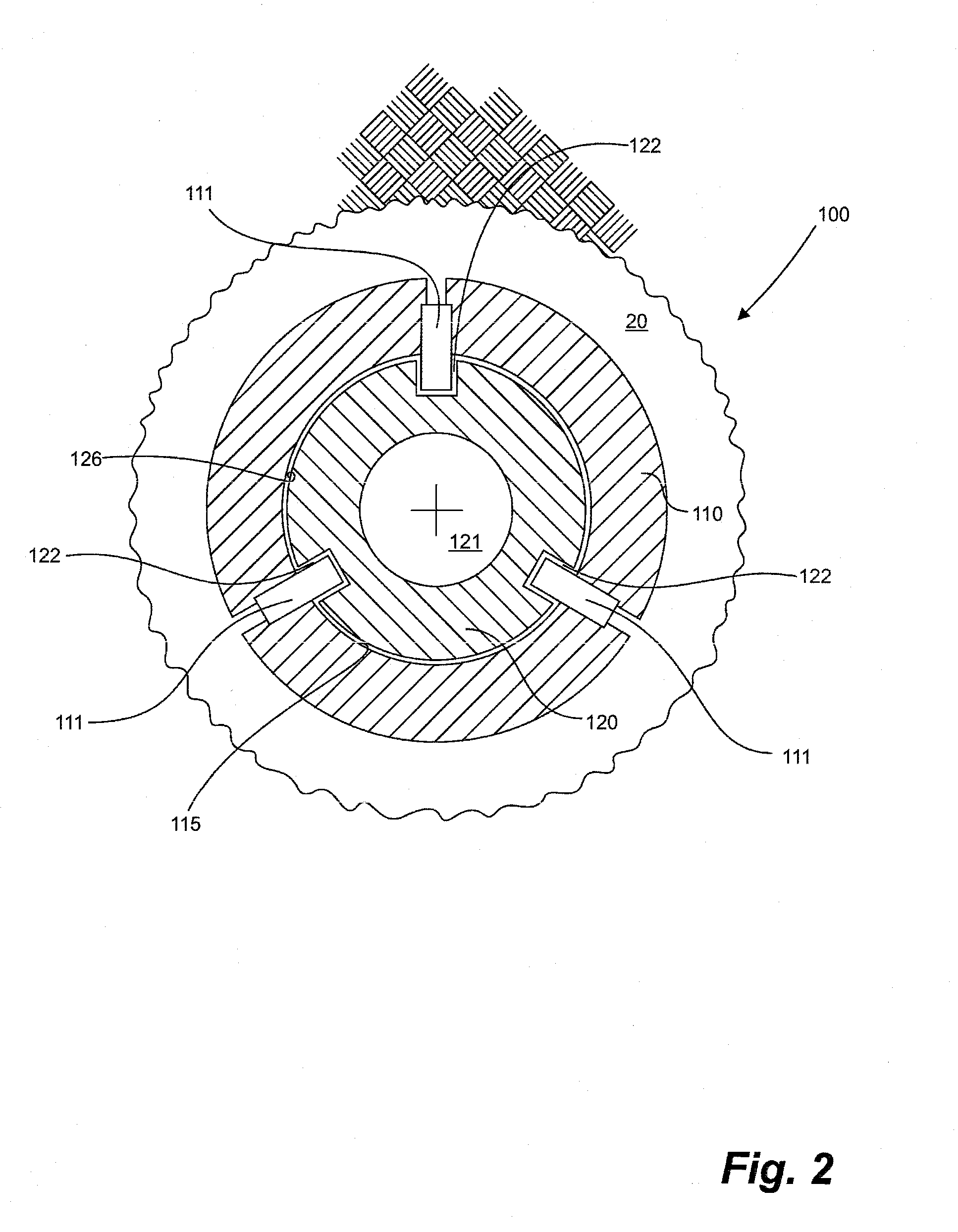Wellbore obstruction clearing tool and method of use
a technology for clearing obstructions and wellbores, applied in the direction of shaft sinking, shaft equipment, borehole/well accessories, etc., can solve the problems of difficult advancing or removal of the casing from the wellbore, tight spots and obstructions of the casing, and particularly problematic problems
- Summary
- Abstract
- Description
- Claims
- Application Information
AI Technical Summary
Benefits of technology
Problems solved by technology
Method used
Image
Examples
example
[0099]An embodiment of the invention was tested during casing of a vertical wellbore in which normal casing operations were first attempted and had failed. Obstructions were encountered at about 1 kilometer downhole preventing passage of the casing to the target depth.
[0100]Previously, a drilling fluid was circulated through the casing and adjacent the obstructions in an attempt to hydraulically clear the obstruction. The process lasted three successive days, at great expense, and was ultimately unsuccessful in clearing a first obstruction. The casing was tripped out and a mud motor was run downhole to mechanically drill through the first obstruction. The conventional mandrel, drill bit and bottom sub of the expensive mud motor were eventually lost downhole without successfully clearing the first obstruction. The bottom sub of the mud motor was eventually recovered by a fishing operation. Several weeks were lost and the first obstruction was still not cleared.
[0101]Thereafter, an ob...
PUM
 Login to View More
Login to View More Abstract
Description
Claims
Application Information
 Login to View More
Login to View More - R&D
- Intellectual Property
- Life Sciences
- Materials
- Tech Scout
- Unparalleled Data Quality
- Higher Quality Content
- 60% Fewer Hallucinations
Browse by: Latest US Patents, China's latest patents, Technical Efficacy Thesaurus, Application Domain, Technology Topic, Popular Technical Reports.
© 2025 PatSnap. All rights reserved.Legal|Privacy policy|Modern Slavery Act Transparency Statement|Sitemap|About US| Contact US: help@patsnap.com



